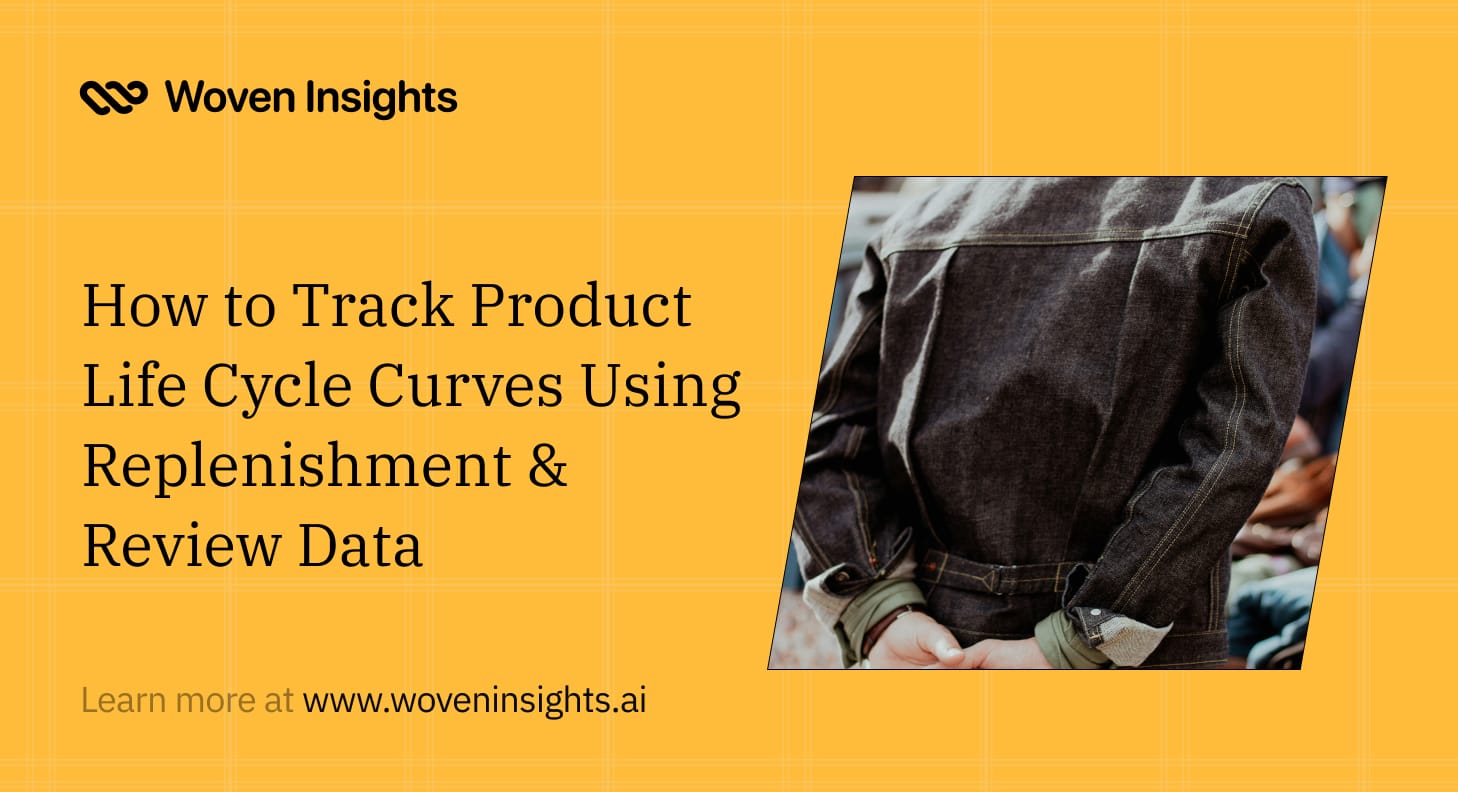How to Track Product Life Cycle Curves Using Replenishment & Review Data
Learn how replenishment and review data reveal the product life cycle curve in fashion, helping brands optimize inventory and timing.

Every fashion product follows a life cycle curve from launch and growth to maturity and eventual decline. The challenge is spotting where an item sits on this curve in real time. Too often, brands realize a product has peaked only after sales drop.
Data from replenishment patterns and customer reviews offers a sharper lens into life cycle management. According to Bain, brands that monitor product life cycles with replenishment data reduce overstock by up to 25%.
Why Replenishment & Review Data Matter
- Replenishment Frequency: High restock frequency signals products in the growth phase. Declining restocks hint at maturity or decline.
- Review Volume & Sentiment: Spikes in positive reviews suggest consumer excitement, while flat or negative reviews show fatigue.
- Category-Specific Patterns: Basics (like jeans) may have longer cycles, while trend-driven items fade fast.
How to Use This Data
- Early Growth Detection: Spot products gaining traction through repeated restocks.
- Peak Identification: Cross-reference sales velocity with review excitement to find the sweet spot for campaigns.
- End-of-Cycle Management: Detect fatigue early via negative reviews and slowing replenishment pivot to discounts before inventory piles up.
Conclusion
Replenishment and review data give fashion brands a live pulse on product life cycles. With this visibility, merchandisers can time campaigns, manage inventory, and avoid costly markdowns turning every phase of the curve into a strategic advantage.
About Woveninsights
Woveninsights is a comprehensive market analytics solution that provides fashion brands with real-time access to retail market and consumer insights, sourced from over 70 million real shoppers and 20 million analyzed fashion products. Our platform helps brands track market trends, assess competitor performance, and refine product strategies with precision.
Woveninsights provides you with all the actionable data you need to create fashion products that are truly market-ready and consumer-aligned.
Click on the Book a demo button below to get started today.

